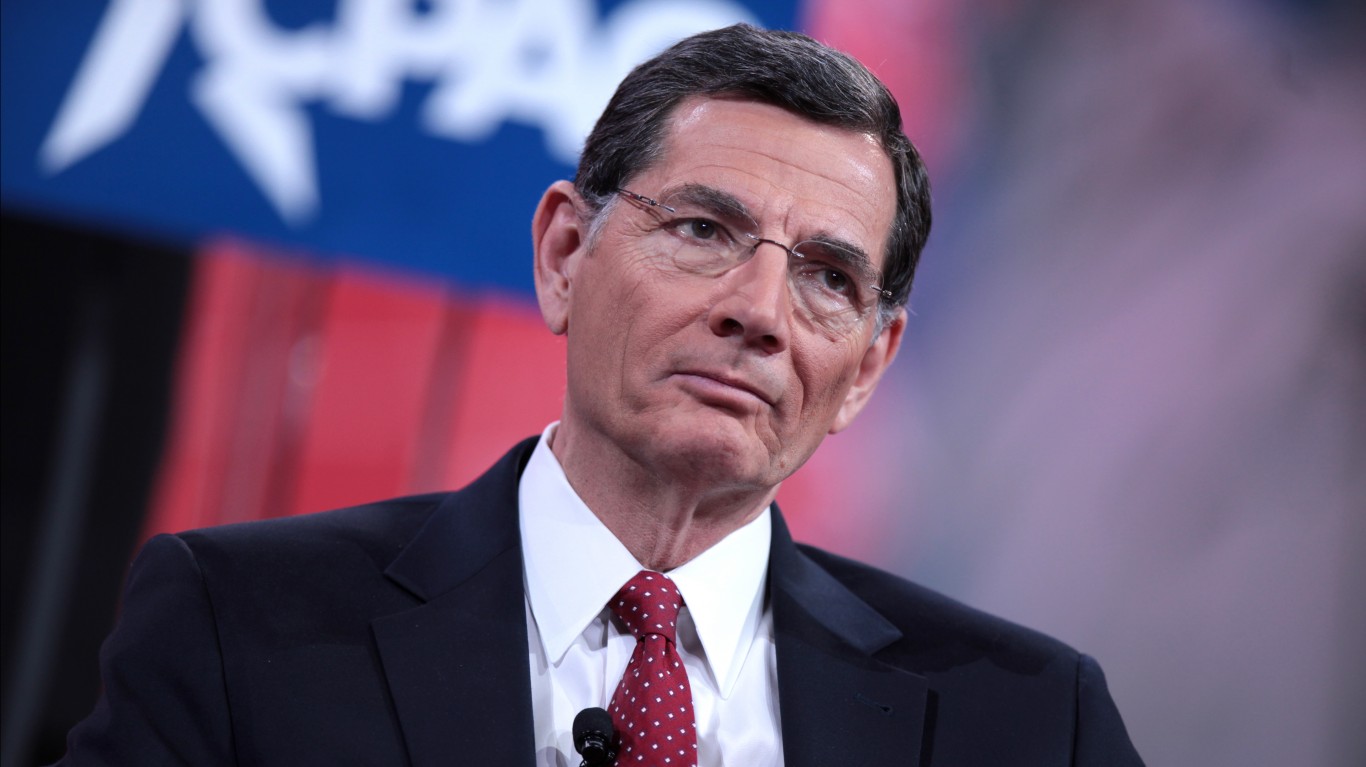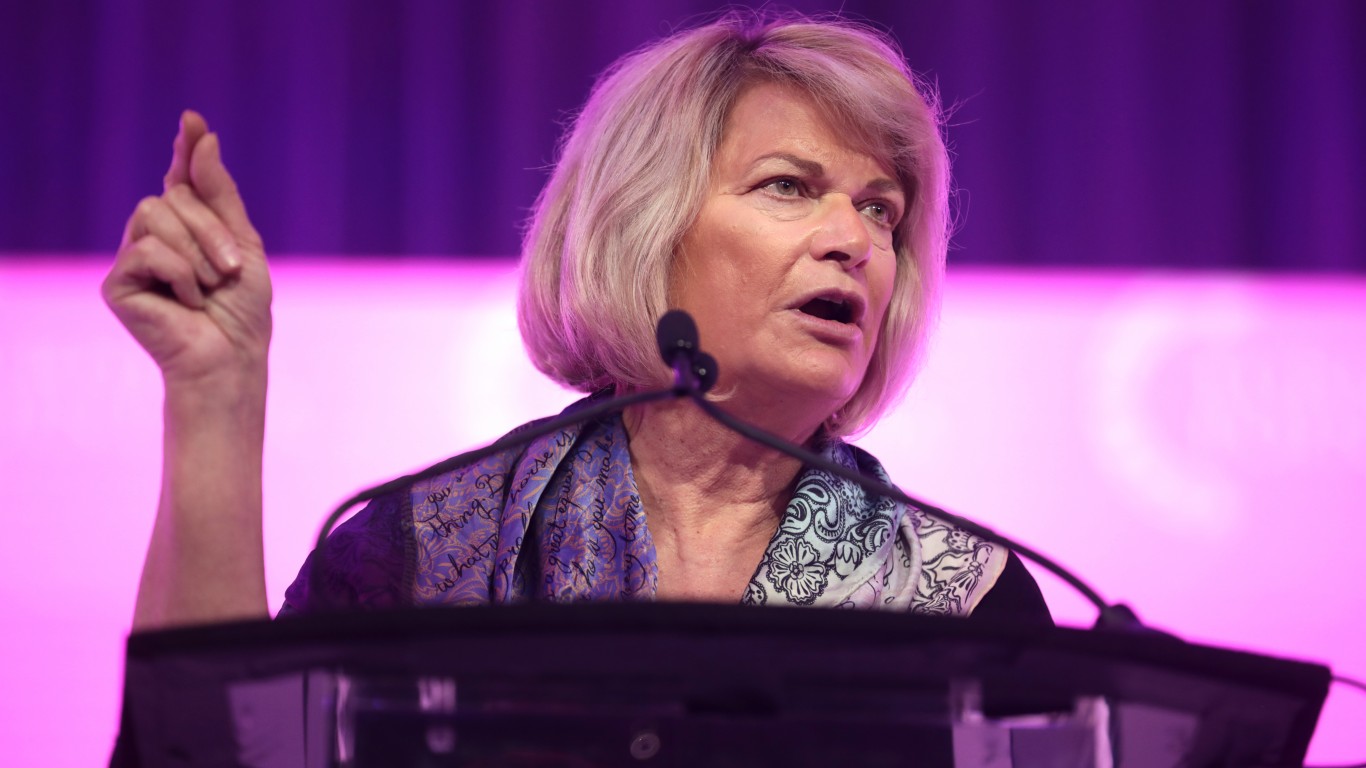
The last year on Capitol Hill has been defined largely by stalled legislation, party infighting, and partisan gridlock. And recent polling shows that many U.S. senators are paying the price.
According to polling data collected by public opinion research company Morning Consult, one-third of the 100 sitting U.S. senators have seen their approval ratings dip by 2 or more percentage points in the last year, including four lawmakers whose approval ratings have dipped by over 6 percentage points.
Using survey data from Morning Consult, 24/7 Wall St. identified the U.S. senators who are losing popularity. Our list includes all 33 senators whose approval rating fell by 2 percentage points or more from the first quarter of 2021 to the first quarter of 2022.
From the botched military withdrawal from Afghanistan to soaring inflation and failed legislative initiatives, the past year has been a difficult one in American politics. And as Democratic Party controls both the legislative and executive branches, Democratic lawmakers appear more likely to be losing support. Just as President Joe Biden’s poll numbers have slumped, the majority of senators on this list are Democratic. Still, there is no shortage of Republican lawmakers on this list.
It is important to note that though every senator on this list is less popular with their constituents now than they were a year ago, many still maintain a large support base. These lawmakers include Vermont Sens. Bernie Sanders (I) and Patrick Leahy (D), and Wyoming Sens. John Barrasso (R) and Cynthia Lummis (R). Here is a look at America’s most popular senators.
Nine of the 33 senators on this list are up for reelection this year, though two of them, Senator Pat Leahy (D) of Vermont and Richard Shelby (R) of Alabama, are not seeking reelection.
Click here to see the U.S. senators who are losing popularity
Click here to read our detailed methodology
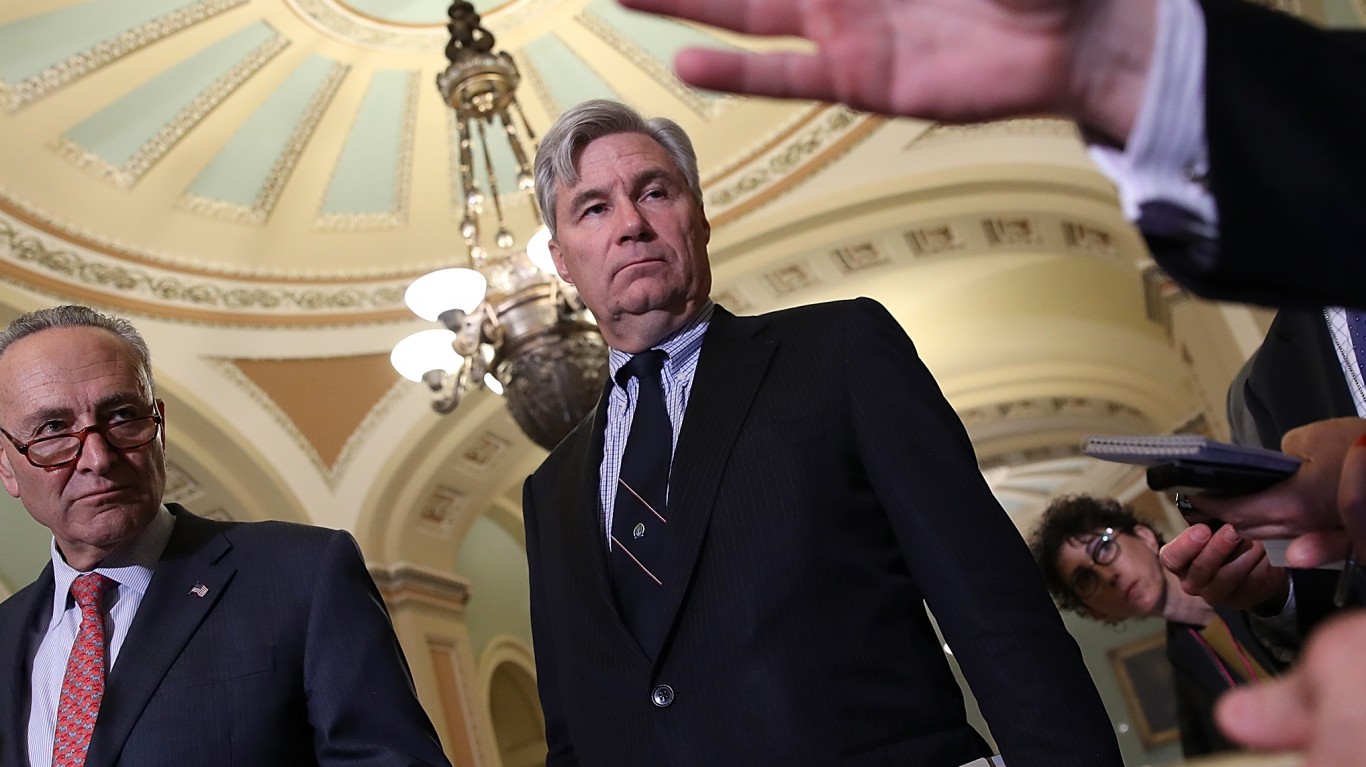
33. Senator Sheldon Whitehouse of Rhode Island (D)
> 1-yr. change in approval rating: -2 pct. Points
> Q1 2022 popularity: 48% approve; 34% disapprove
> Q1 2021 popularity: 50% approve; 32% disapprove
> Current term ends: 2025
> Nov. 2020 voter participation in Rhode Island: 61.3% (22nd lowest)
[in-text-ad]

32. Senator Cindy Hyde-Smith of Mississippi (R)
> 1-yr. change in approval rating: -2 pct. Points
> Q1 2022 popularity: 44% approve; 39% disapprove
> Q1 2021 popularity: 46% approve; 36% disapprove
> Current term ends: 2027
> Nov. 2020 voter participation in Mississippi: 69.2% (7th highest)
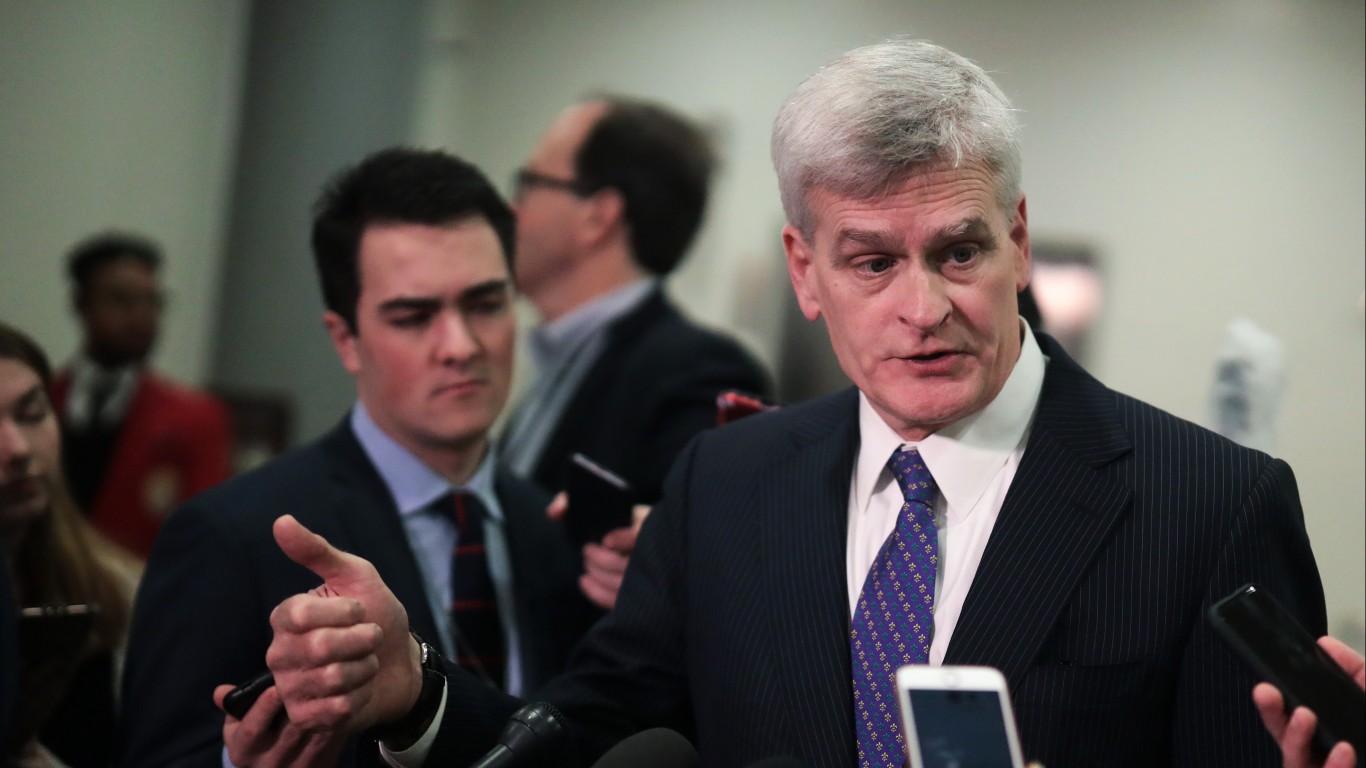
31. Senator Bill Cassidy of Louisiana (R)
> 1-yr. change in approval rating: -2 pct. Points
> Q1 2022 popularity: 43% approve; 40% disapprove
> Q1 2021 popularity: 45% approve; 40% disapprove
> Current term ends: 2027
> Nov. 2020 voter participation in Louisiana: 59.4% (14th lowest)
30. Senator Tina Smith of Minnesota (D)
> 1-yr. change in approval rating: -2 pct. Points
> Q1 2022 popularity: 44% approve; 35% disapprove
> Q1 2021 popularity: 46% approve; 34% disapprove
> Current term ends: 2027
> Nov. 2020 voter participation in Minnesota: 74.3% (the highest)
[in-text-ad-2]
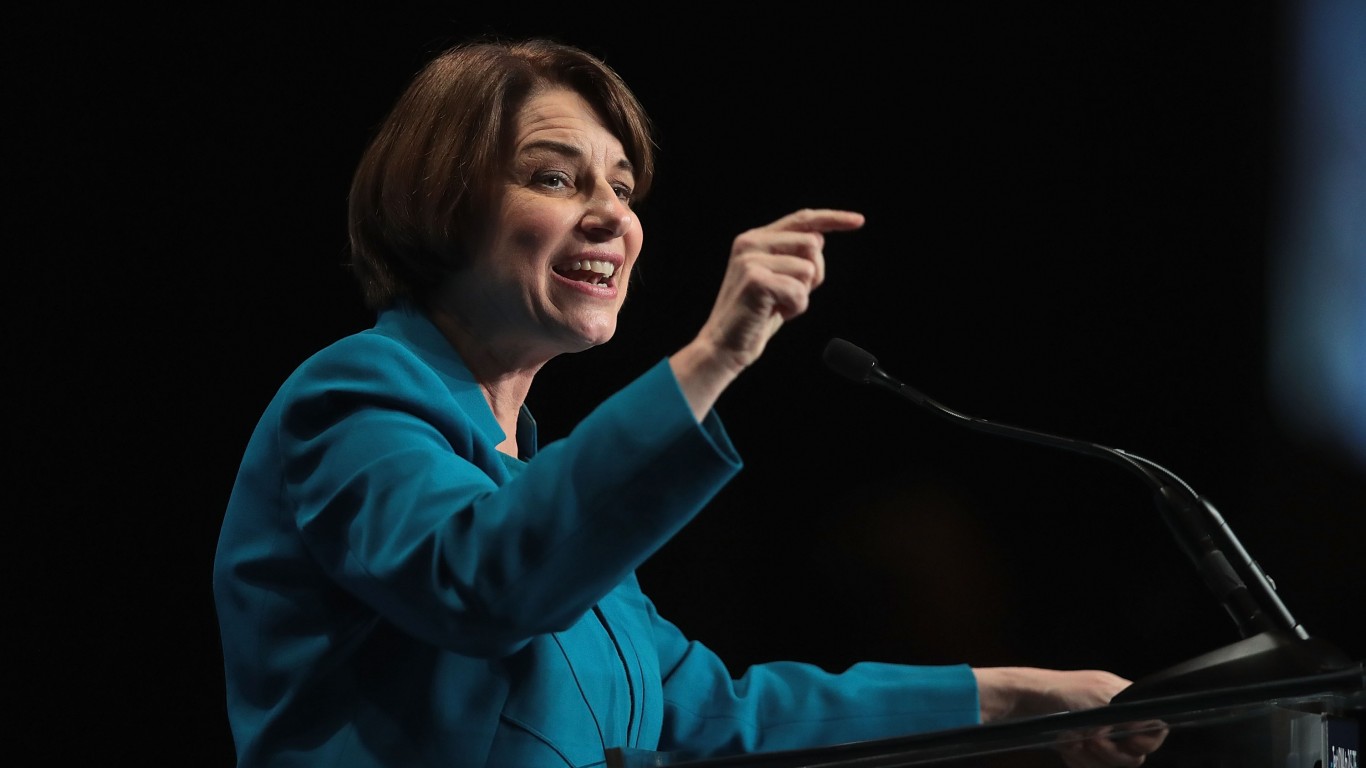
29. Senator Amy Klobuchar of Minnesota (D)
> 1-yr. change in approval rating: -2 pct. Points
> Q1 2022 popularity: 50% approve; 38% disapprove
> Q1 2021 popularity: 52% approve; 36% disapprove
> Current term ends: 2025
> Nov. 2020 voter participation in Minnesota: 74.3% (the highest)
28. Senator Kyrsten Sinema of Arizona (D)
> 1-yr. change in approval rating: -2 pct. Points
> Q1 2022 popularity: 44% approve; 42% disapprove
> Q1 2021 popularity: 46% approve; 35% disapprove
> Current term ends: 2025
> Nov. 2020 voter participation in Arizona: 64.7% (17th highest)
[in-text-ad]
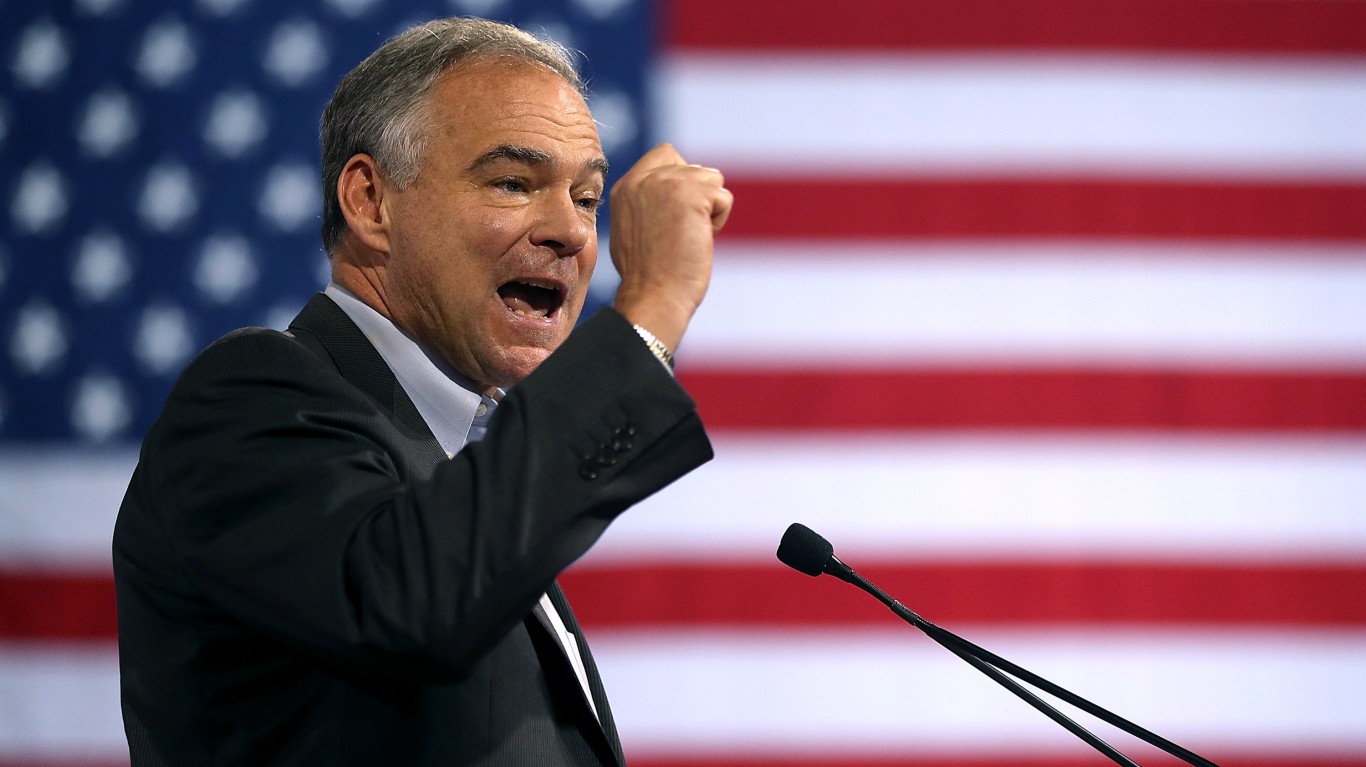
27. Senator Timothy Kaine of Virginia (D)
> 1-yr. change in approval rating: -2 pct. Points
> Q1 2022 popularity: 46% approve; 37% disapprove
> Q1 2021 popularity: 48% approve; 35% disapprove
> Current term ends: 2025
> Nov. 2020 voter participation in Virginia: 66.0% (14th highest)
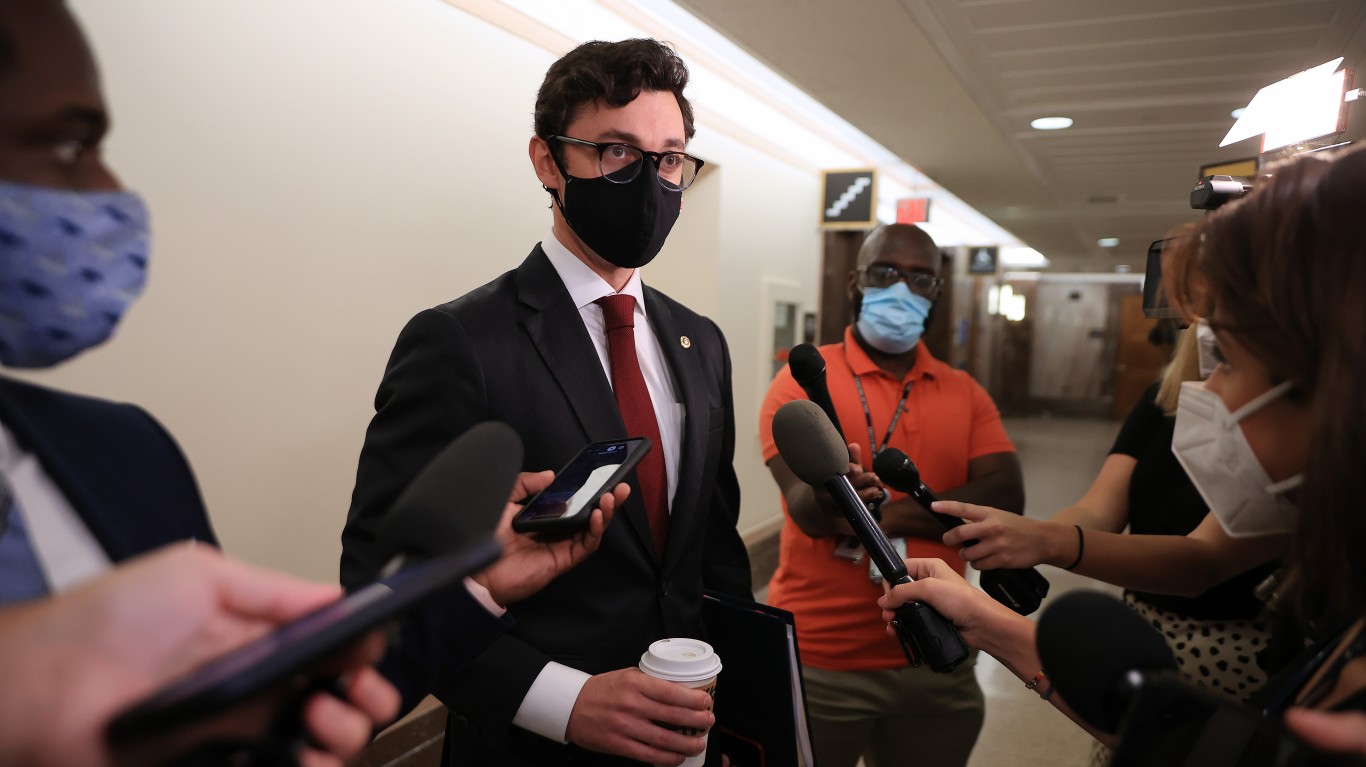
26. Senator Jon Ossoff of Georgia (D)
> 1-yr. change in approval rating: -2 pct. Points
> Q1 2022 popularity: 44% approve; 40% disapprove
> Q1 2021 popularity: 46% approve; 37% disapprove
> Current term ends: 2027
> Nov. 2020 voter participation in Georgia: 60.9% (20th lowest)
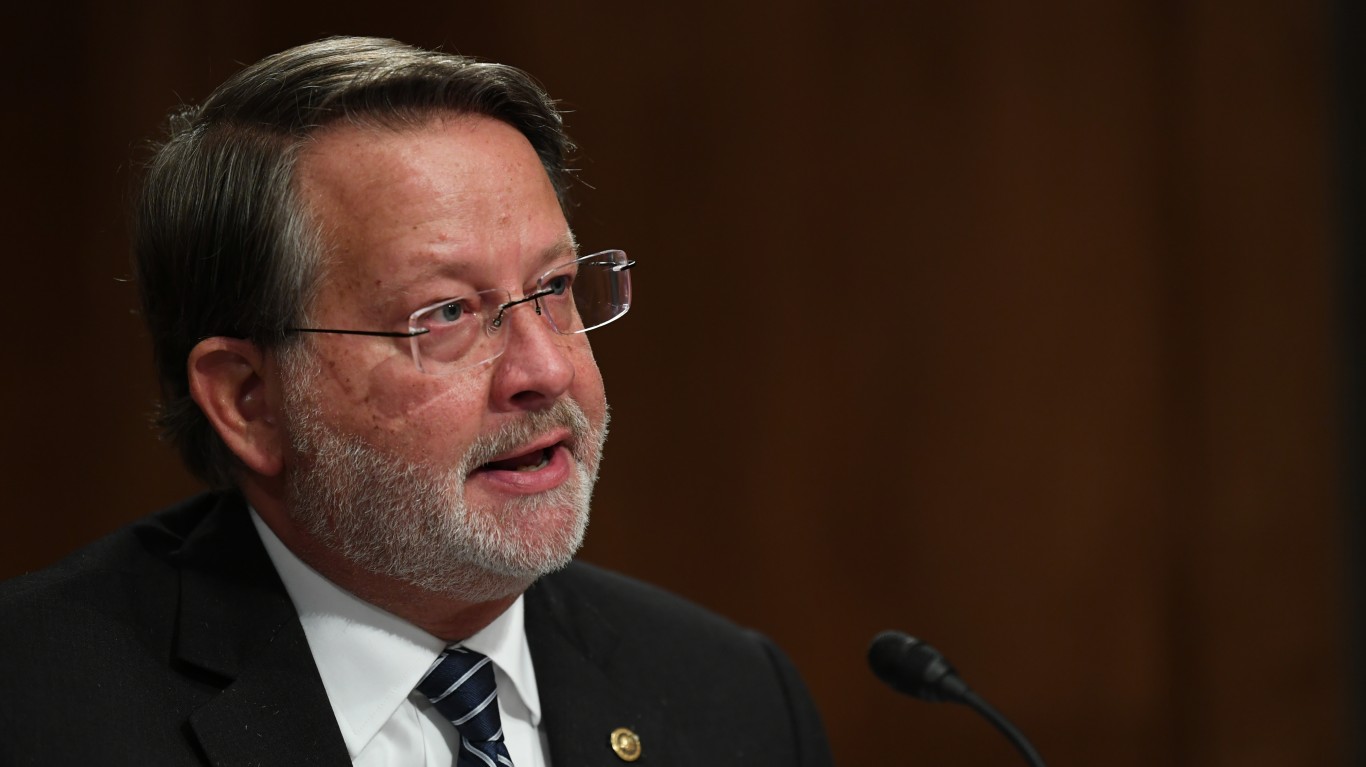
25. Senator Gary Peters of Michigan (D)
> 1-yr. change in approval rating: -2 pct. Points
> Q1 2022 popularity: 42% approve; 37% disapprove
> Q1 2021 popularity: 44% approve; 37% disapprove
> Current term ends: 2027
> Nov. 2020 voter participation in Michigan: 64.1% (20th highest)
[in-text-ad-2]
24. Senator John Cornyn of Texas (R)
> 1-yr. change in approval rating: -2 pct. Points
> Q1 2022 popularity: 45% approve; 34% disapprove
> Q1 2021 popularity: 47% approve; 33% disapprove
> Current term ends: 2027
> Nov. 2020 voter participation in Texas: 55.3% (3rd lowest)
23. Senator Michael Crapo of Idaho (R)
> 1-yr. change in approval rating: -3 pct. Points
> Q1 2022 popularity: 46% approve; 39% disapprove
> Q1 2021 popularity: 49% approve; 33% disapprove
> Current term ends: 2023 (seeking re-election)
> Nov. 2020 voter participation in Idaho: 61.6% (23rd lowest)
[in-text-ad]
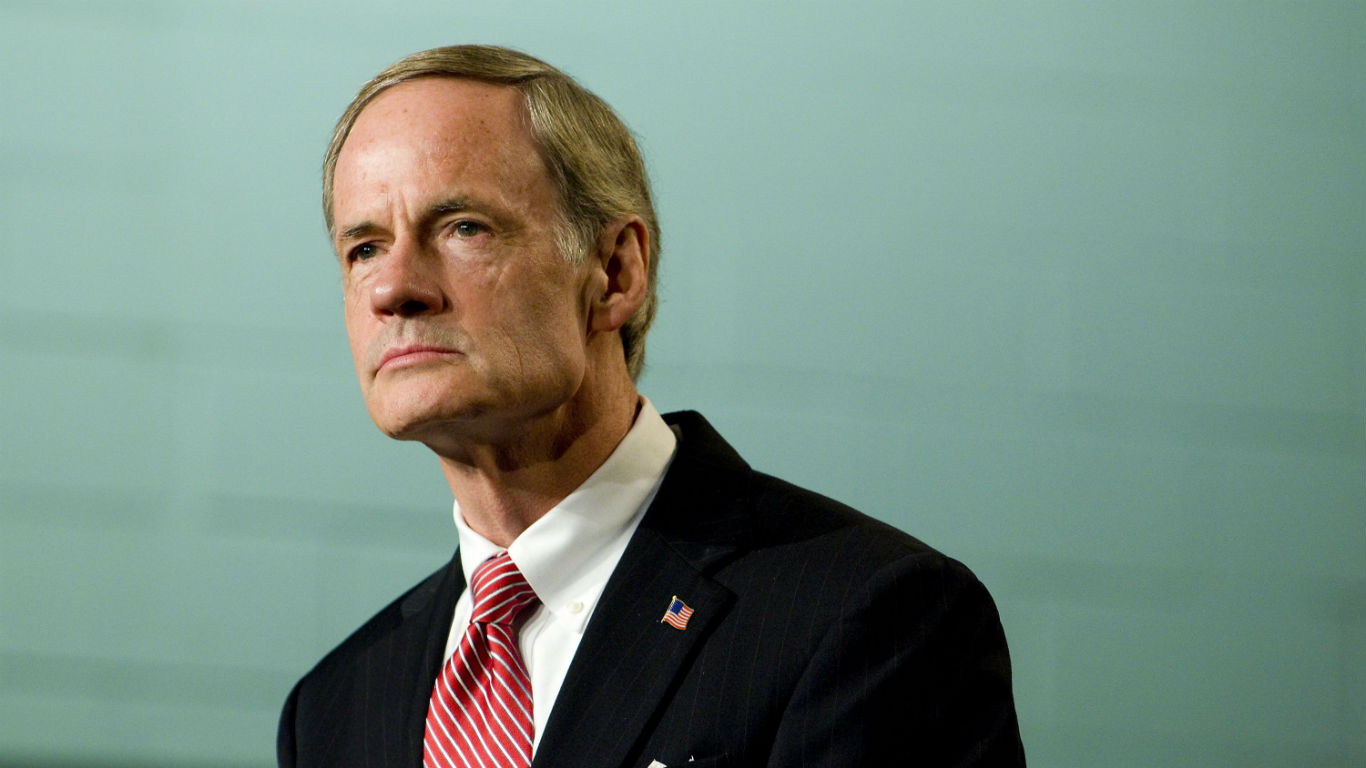
22. Senator Thomas Carper of Delaware (D)
> 1-yr. change in approval rating: -3 pct. Points
> Q1 2022 popularity: 51% approve; 30% disapprove
> Q1 2021 popularity: 54% approve; 28% disapprove
> Current term ends: 2025
> Nov. 2020 voter participation in Delaware: 63.8% (22nd highest)

21. Senator Deb Fischer of Nebraska (R)
> 1-yr. change in approval rating: -3 pct. Points
> Q1 2022 popularity: 44% approve; 38% disapprove
> Q1 2021 popularity: 47% approve; 36% disapprove
> Current term ends: 2025
> Nov. 2020 voter participation in Nebraska: 62.2% (24th lowest)

20. Senator John Kennedy of Louisiana (R)
> 1-yr. change in approval rating: -3 pct. Points
> Q1 2022 popularity: 54% approve; 28% disapprove
> Q1 2021 popularity: 57% approve; 27% disapprove
> Current term ends: 2023 (seeking re-election)
> Nov. 2020 voter participation in Louisiana: 59.4% (14th lowest)
[in-text-ad-2]
19. Senator Jeff Merkley of Oregon (D)
> 1-yr. change in approval rating: -3 pct. Points
> Q1 2022 popularity: 45% approve; 34% disapprove
> Q1 2021 popularity: 48% approve; 34% disapprove
> Current term ends: 2027
> Nov. 2020 voter participation in Oregon: 71.3% (5th highest)
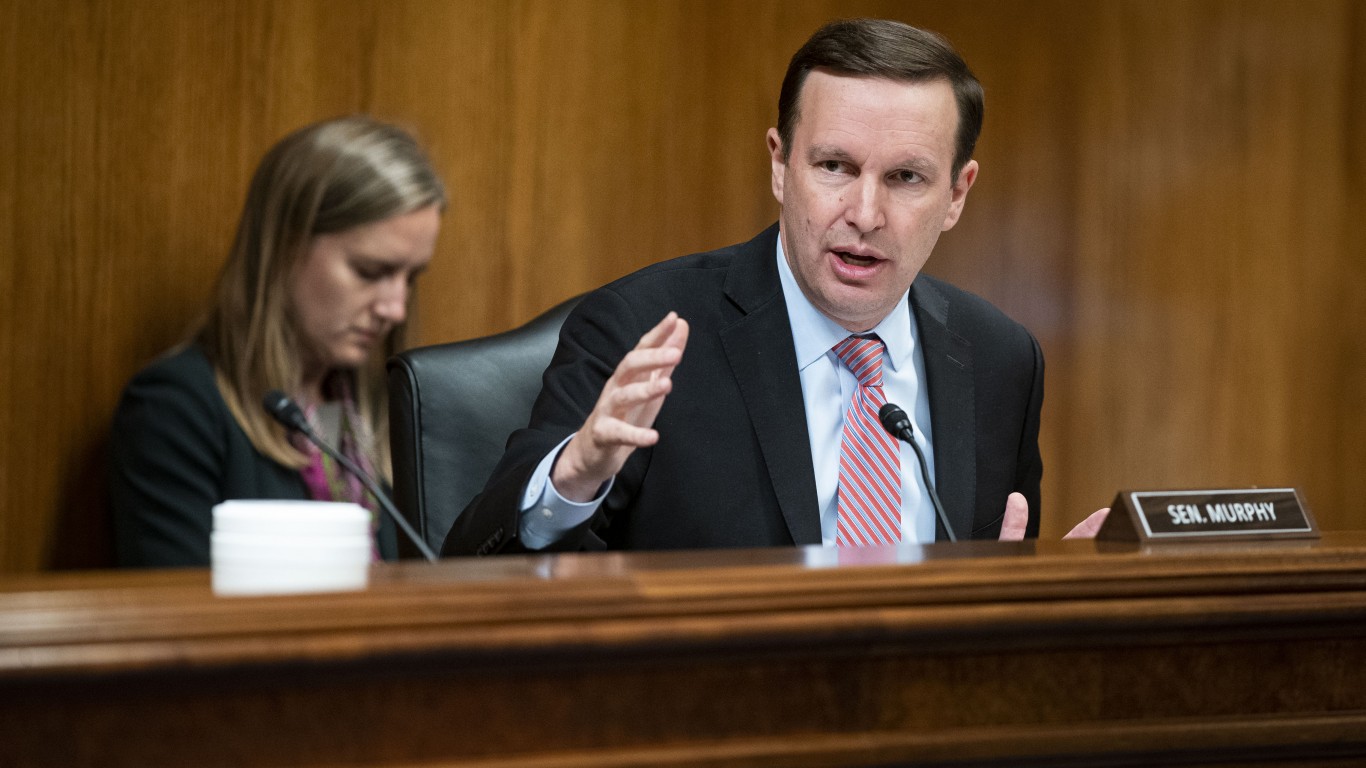
18. Senator Christopher Murphy of Connecticut (D)
> 1-yr. change in approval rating: -3 pct. Points
> Q1 2022 popularity: 48% approve; 38% disapprove
> Q1 2021 popularity: 51% approve; 34% disapprove
> Current term ends: 2025
> Nov. 2020 voter participation in Connecticut: 60.5% (19th lowest)
[in-text-ad]
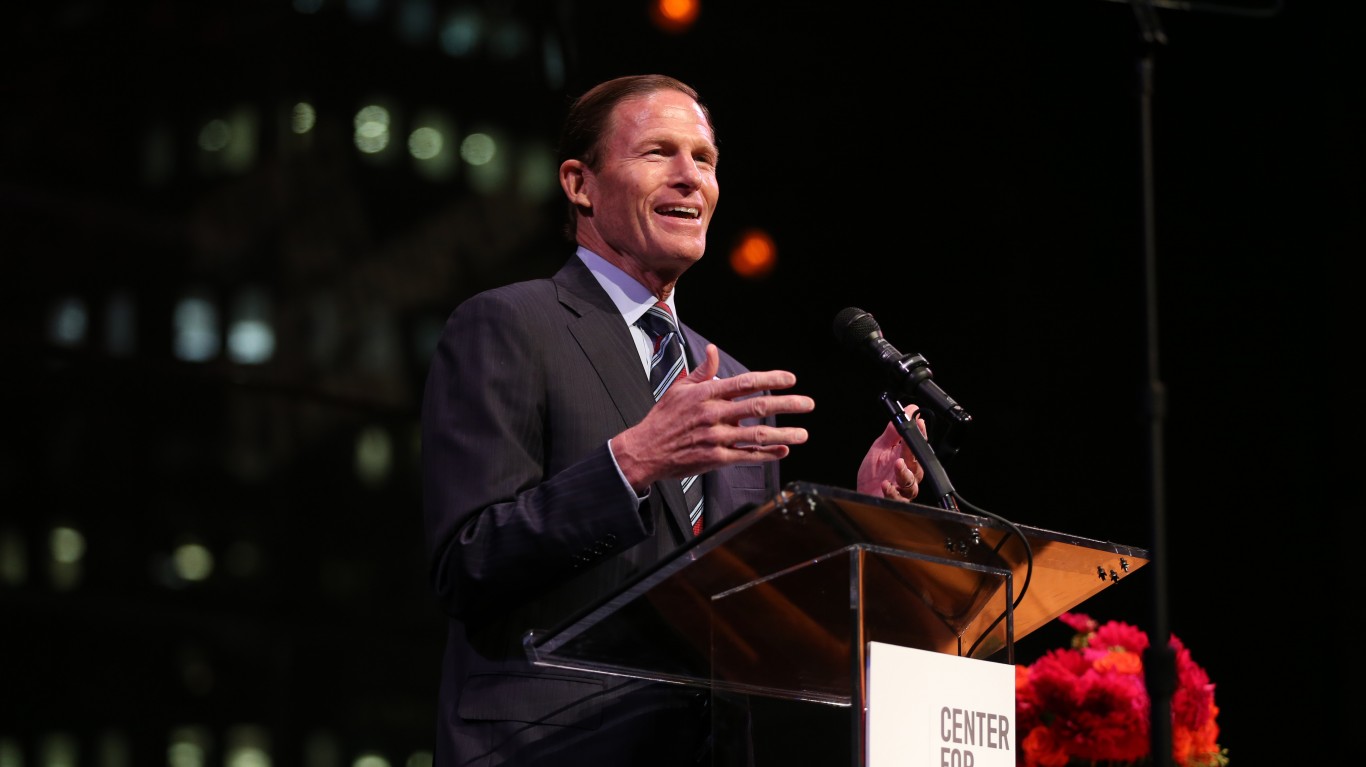
17. Senator Richard Blumenthal of Connecticut (D)
> 1-yr. change in approval rating: -3 pct. Points
> Q1 2022 popularity: 46% approve; 41% disapprove
> Q1 2021 popularity: 49% approve; 39% disapprove
> Current term ends: 2023 (seeking re-election)
> Nov. 2020 voter participation in Connecticut: 60.5% (19th lowest)

16. Senator Rand Paul of Kentucky (R)
> 1-yr. change in approval rating: -3 pct. Points
> Q1 2022 popularity: 47% approve; 40% disapprove
> Q1 2021 popularity: 50% approve; 36% disapprove
> Current term ends: 2023 (seeking re-election)
> Nov. 2020 voter participation in Kentucky: 65.3% (15th highest)
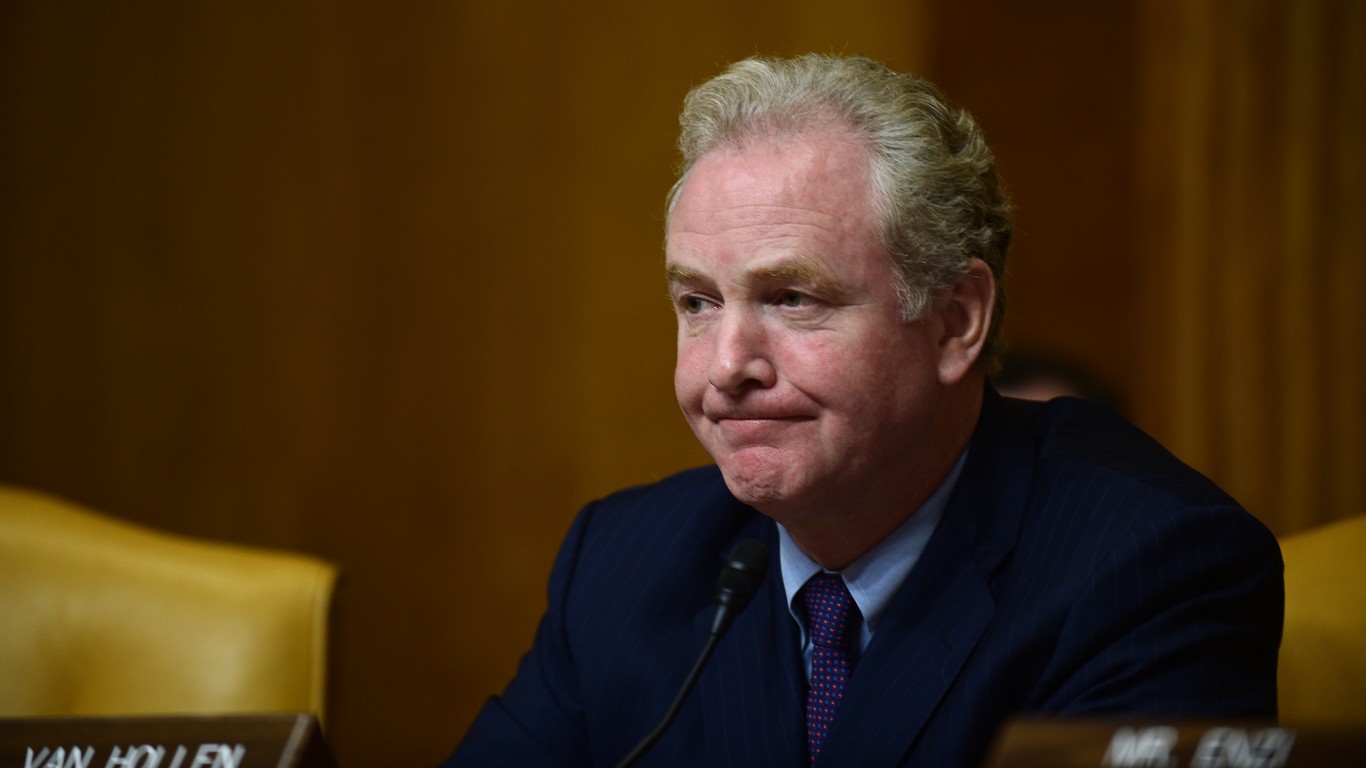
15. Senator Chris Van Hollen of Maryland (D)
> 1-yr. change in approval rating: -3 pct. Points
> Q1 2022 popularity: 48% approve; 25% disapprove
> Q1 2021 popularity: 51% approve; 21% disapprove
> Current term ends: 2023 (seeking re-election)
> Nov. 2020 voter participation in Maryland: 68.7% (8th highest)
[in-text-ad-2]

14. Senator Todd Young of Indiana (R)
> 1-yr. change in approval rating: -3 pct. Points
> Q1 2022 popularity: 43% approve; 32% disapprove
> Q1 2021 popularity: 46% approve; 30% disapprove
> Current term ends: 2023 (seeking re-election)
> Nov. 2020 voter participation in Indiana: 58.9% (13th lowest)

13. Senator Mike Braun of Indiana (R)
> 1-yr. change in approval rating: -3 pct. Points
> Q1 2022 popularity: 44% approve; 34% disapprove
> Q1 2021 popularity: 47% approve; 32% disapprove
> Current term ends: 2025
> Nov. 2020 voter participation in Indiana: 58.9% (13th lowest)
[in-text-ad]

12. Senator Elizabeth Warren of Massachusetts (D)
> 1-yr. change in approval rating: -3 pct. Points
> Q1 2022 popularity: 49% approve; 41% disapprove
> Q1 2021 popularity: 52% approve; 38% disapprove
> Current term ends: 2025
> Nov. 2020 voter participation in Massachusetts: 58.9% (12th lowest)

11. Senator Richard Shelby of Alabama (R)
> 1-yr. change in approval rating: -3 pct. Points
> Q1 2022 popularity: 50% approve; 29% disapprove
> Q1 2021 popularity: 53% approve; 26% disapprove
> Current term ends: 2023 (Not seeking re-election)
> Nov. 2020 voter participation in Alabama: 59.6% (15th lowest)
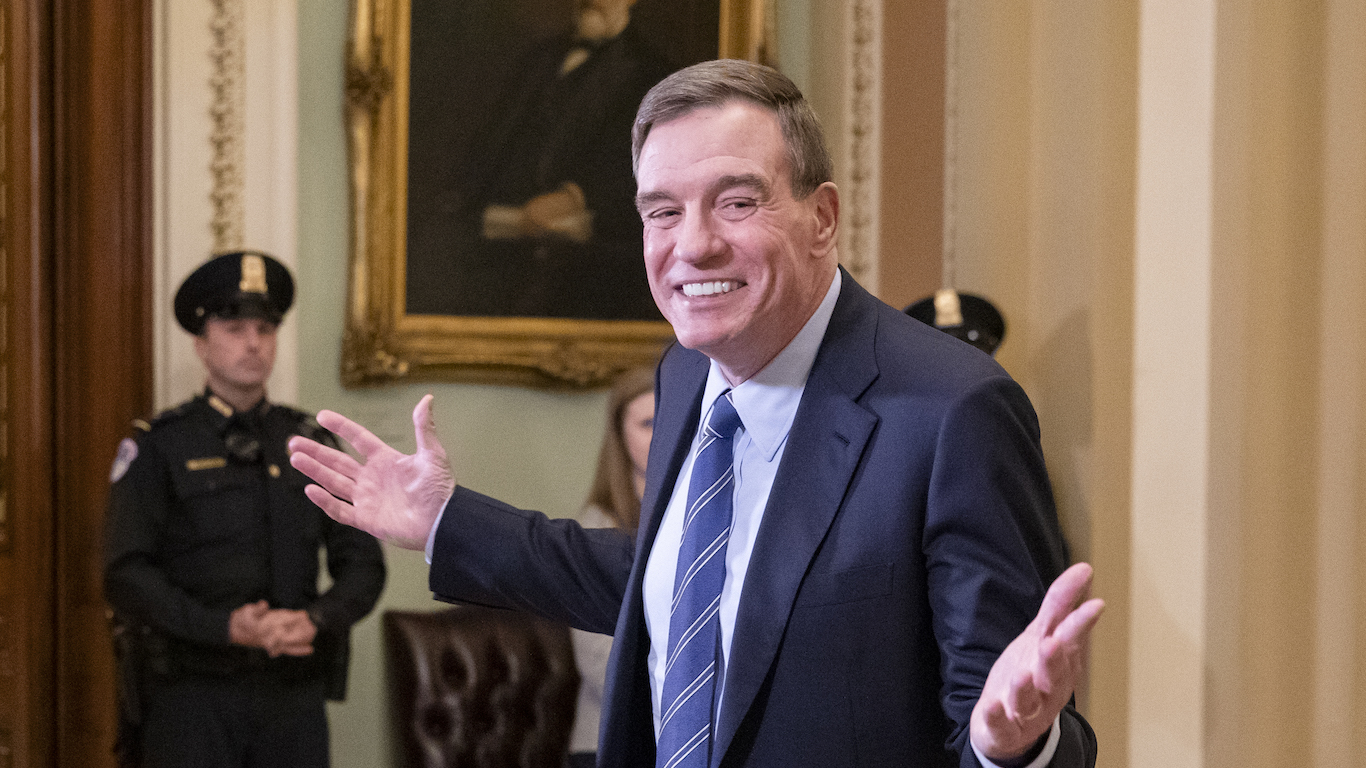
10. Senator Mark Warner of Virginia (D)
> 1-yr. change in approval rating: -3 pct. Points
> Q1 2022 popularity: 50% approve; 33% disapprove
> Q1 2021 popularity: 53% approve; 32% disapprove
> Current term ends: 2027
> Nov. 2020 voter participation in Virginia: 66.0% (14th highest)
[in-text-ad-2]
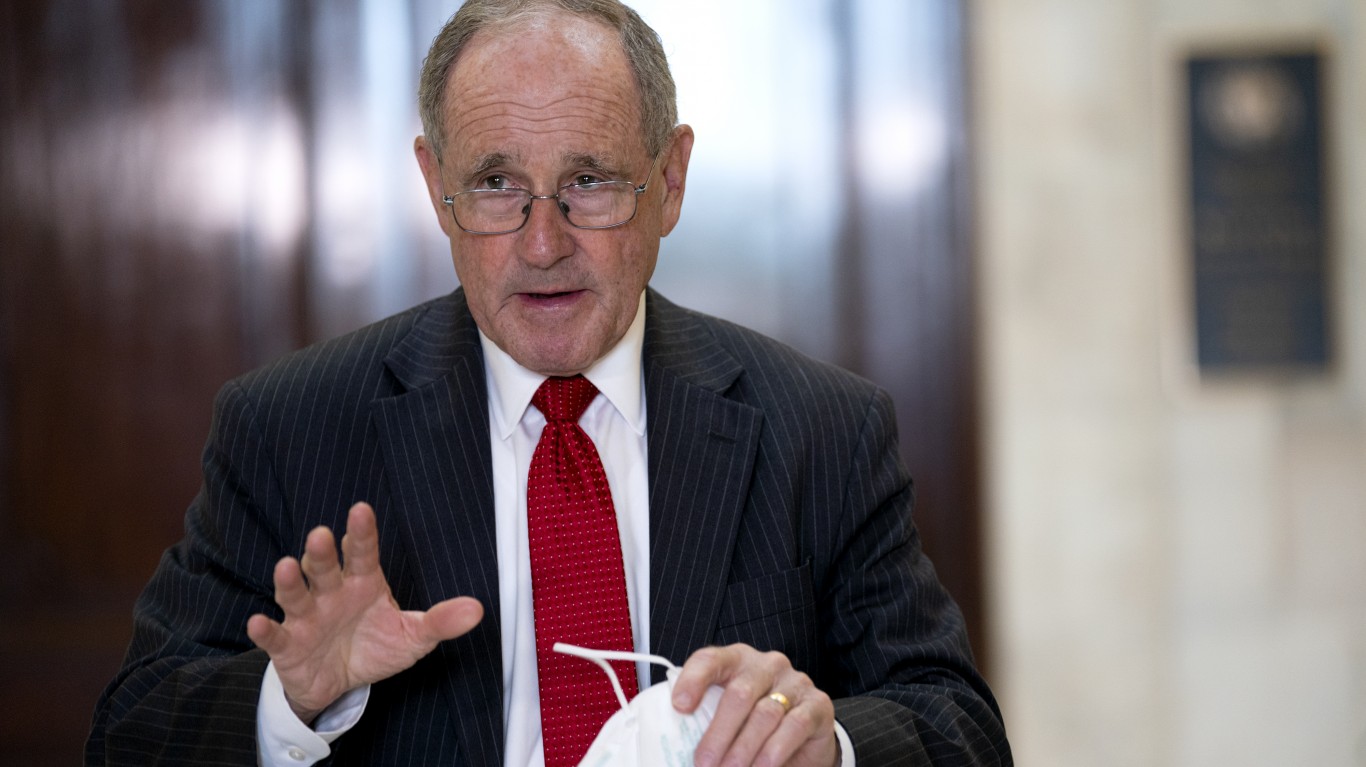
9. Senator James Risch of Idaho (R)
> 1-yr. change in approval rating: -4 pct. Points
> Q1 2022 popularity: 46% approve; 35% disapprove
> Q1 2021 popularity: 50% approve; 32% disapprove
> Current term ends: 2027
> Nov. 2020 voter participation in Idaho: 61.6% (23rd lowest)
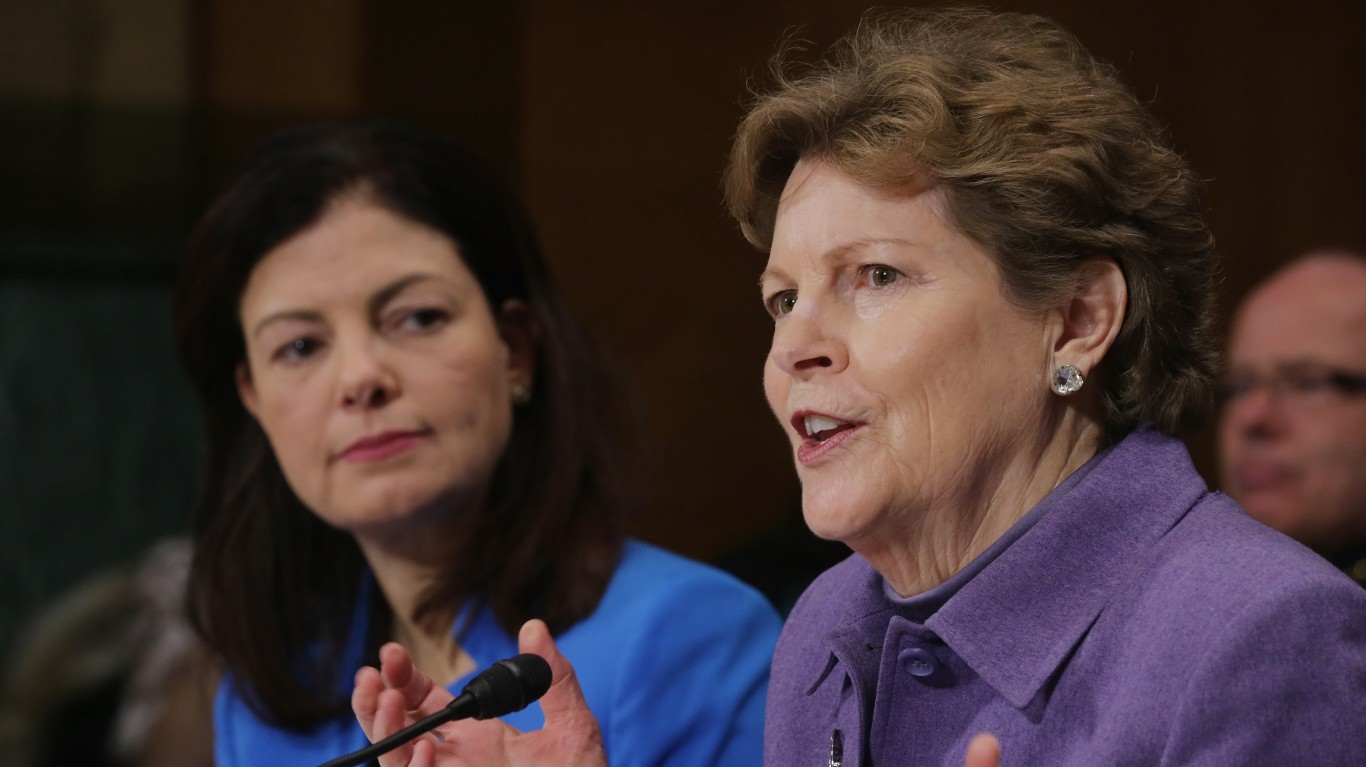
8. Senator Jeanne Shaheen of New Hampshire (D)
> 1-yr. change in approval rating: -4 pct. Points
> Q1 2022 popularity: 50% approve; 38% disapprove
> Q1 2021 popularity: 54% approve; 35% disapprove
> Current term ends: 2027
> Nov. 2020 voter participation in New Hampshire: 72.4% (3rd highest)
[in-text-ad]

7. Senator Jack Reed of Rhode Island (D)
> 1-yr. change in approval rating: -4 pct. Points
> Q1 2022 popularity: 54% approve; 27% disapprove
> Q1 2021 popularity: 58% approve; 23% disapprove
> Current term ends: 2027
> Nov. 2020 voter participation in Rhode Island: 61.3% (22nd lowest)
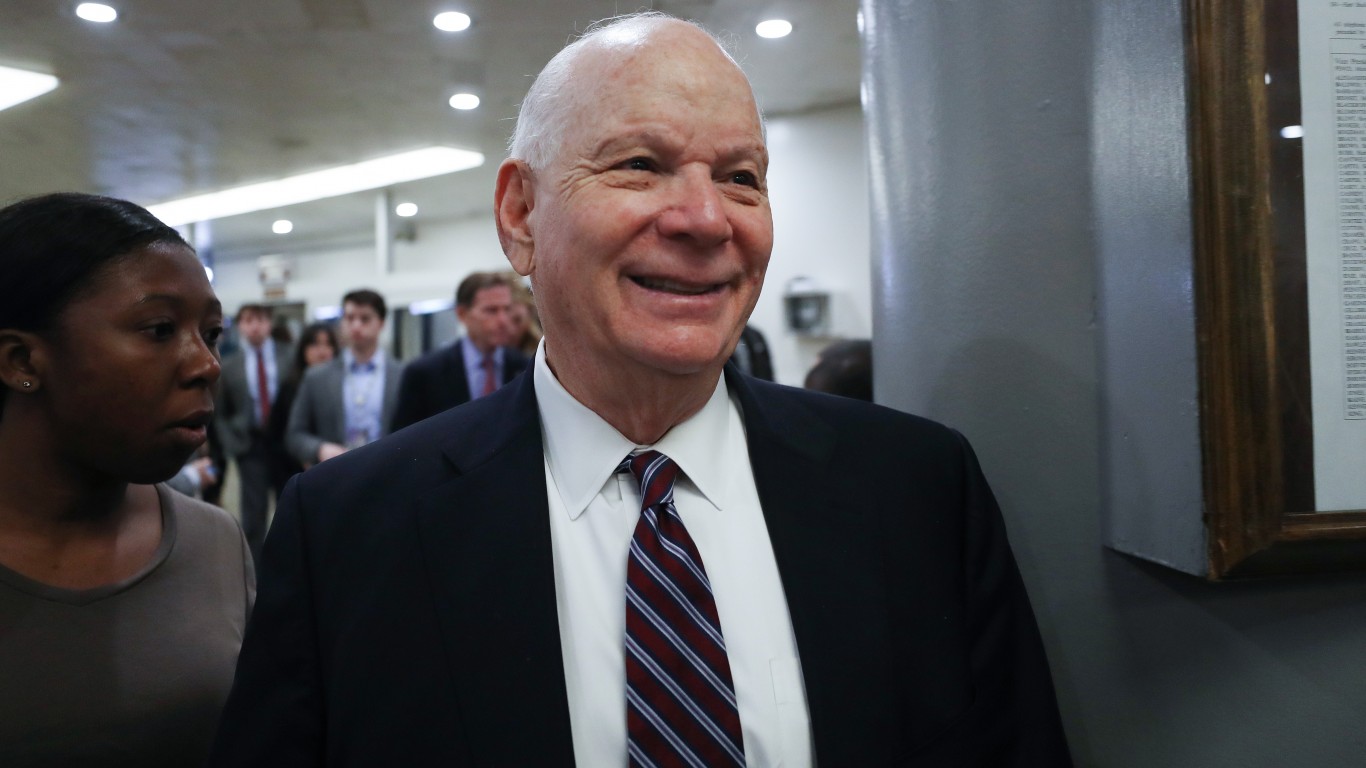
6. Senator Benjamin Cardin of Maryland (D)
> 1-yr. change in approval rating: -4 pct. Points
> Q1 2022 popularity: 50% approve; 24% disapprove
> Q1 2021 popularity: 54% approve; 20% disapprove
> Current term ends: 2025
> Nov. 2020 voter participation in Maryland: 68.7% (8th highest)

5. Senator John Hoeven of North Dakota (R)
> 1-yr. change in approval rating: -5 pct. Points
> Q1 2022 popularity: 58% approve; 29% disapprove
> Q1 2021 popularity: 63% approve; 25% disapprove
> Current term ends: 2023 (seeking re-election)
> Nov. 2020 voter participation in North Dakota: 65.3% (16th highest)
[in-text-ad-2]
4. Senator John Barrasso of Wyoming (R)
> 1-yr. change in approval rating: -7 pct. Points
> Q1 2022 popularity: 62% approve; 31% disapprove
> Q1 2021 popularity: 69% approve; 25% disapprove
> Current term ends: 2025
> Nov. 2020 voter participation in Wyoming: 64.1% (21st highest)
3. Senator Cynthia Lummis of Wyoming (R)
> 1-yr. change in approval rating: -8 pct. Points
> Q1 2022 popularity: 60% approve; 32% disapprove
> Q1 2021 popularity: 68% approve; 23% disapprove
> Current term ends: 2027
> Nov. 2020 voter participation in Wyoming: 64.1% (21st highest)
[in-text-ad]

2. Senator Bernard Sanders of Vermont (I)
> 1-yr. change in approval rating: -8 pct. Points
> Q1 2022 popularity: 62% approve; 34% disapprove
> Q1 2021 popularity: 70% approve; 25% disapprove
> Current term ends: 2025
> Nov. 2020 voter participation in Vermont: 67.5% (13th highest)
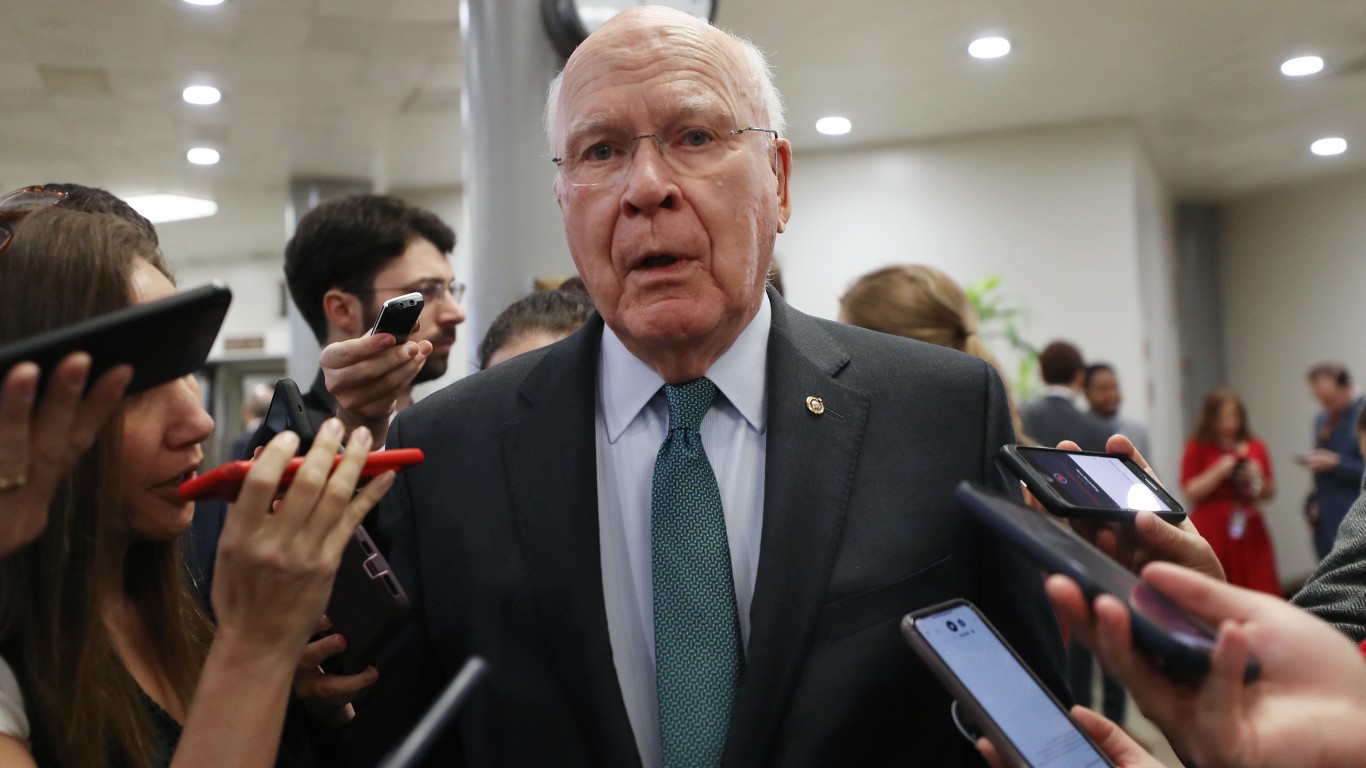
1. Senator Patrick Leahy of Vermont (D)
> 1-yr. change in approval rating: -14 pct. Points
> Q1 2022 popularity: 59% approve; 32% disapprove
> Q1 2021 popularity: 73% approve; 19% disapprove
> Current term ends: 2023 (Not seeking re-election)
> Nov. 2020 voter participation in Vermont: 67.5% (13th highest)
Methodology
To identify the U.S. senators who are losing popularity, 24/7 Wall St. reviewed the percentage point change in approval ratings for all 100 U.S. senators from the first quarter of 2021 to the first quarter of 2022 from Morning Consult, a public opinion data research company. Senators are ranked by the one-year change in the share of their constituency who approve of the job they are doing. In cases where two or more senators have the same change in approval rating, the senator from the state where polls were taken from a larger sample size of registered voters ranks higher.
All polling data was collected among registered voters in the state represented by the senator in question in the first quarter of 2021 and 2022. Approval ratings in this publication are rounded figures and may not exactly match those reported by Morning Consult.
We also reviewed the share of voters who participated on election day in 2020 from the U.S. Census Bureau’s Current Population Survey.
Take Charge of Your Retirement In Just A Few Minutes (Sponsor)
Retirement planning doesn’t have to feel overwhelming. The key is finding expert guidance—and SmartAsset’s simple quiz makes it easier than ever for you to connect with a vetted financial advisor.
Here’s how it works:
- Answer a Few Simple Questions. Tell us a bit about your goals and preferences—it only takes a few minutes!
- Get Matched with Vetted Advisors Our smart tool matches you with up to three pre-screened, vetted advisors who serve your area and are held to a fiduciary standard to act in your best interests. Click here to begin
- Choose Your Fit Review their profiles, schedule an introductory call (or meet in person), and select the advisor who feel is right for you.
Why wait? Start building the retirement you’ve always dreamed of. Click here to get started today!
Thank you for reading! Have some feedback for us?
Contact the 24/7 Wall St. editorial team.


 24/7 Wall St.
24/7 Wall St.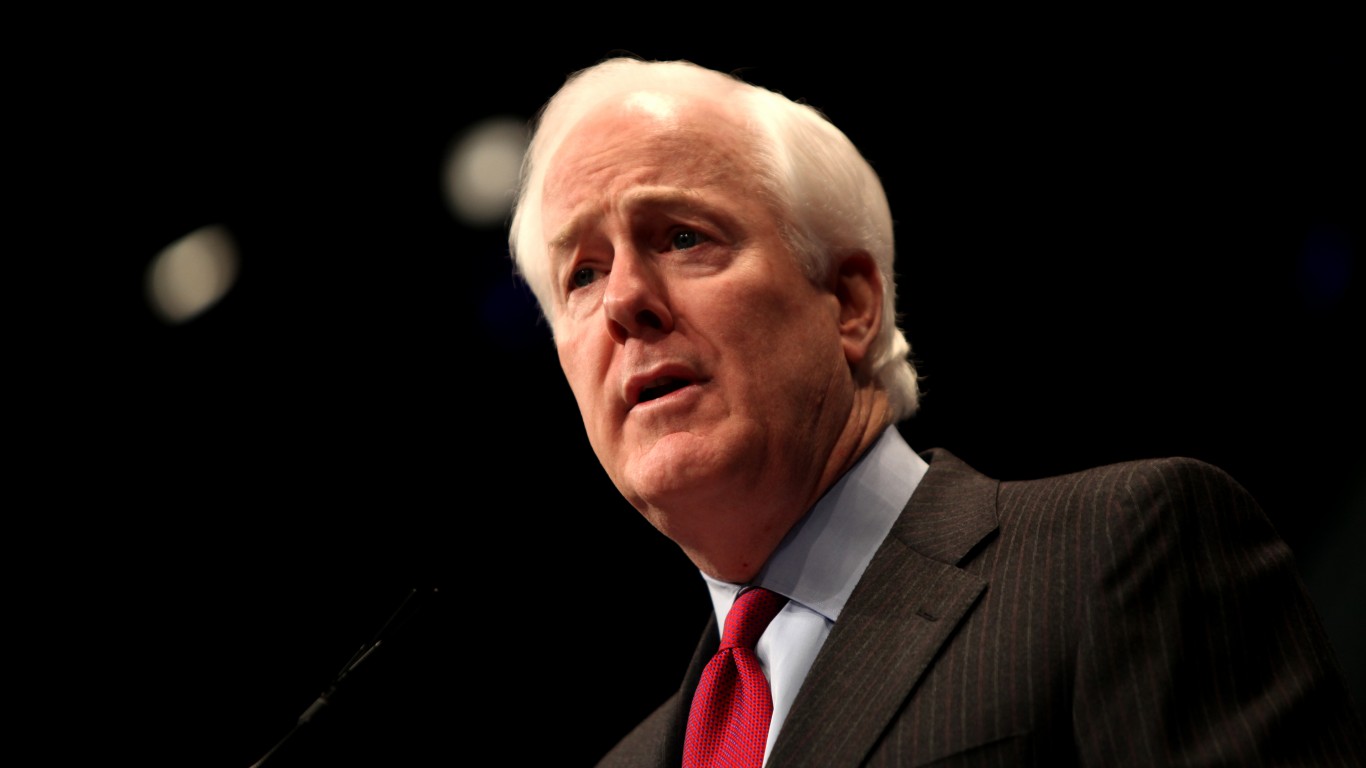


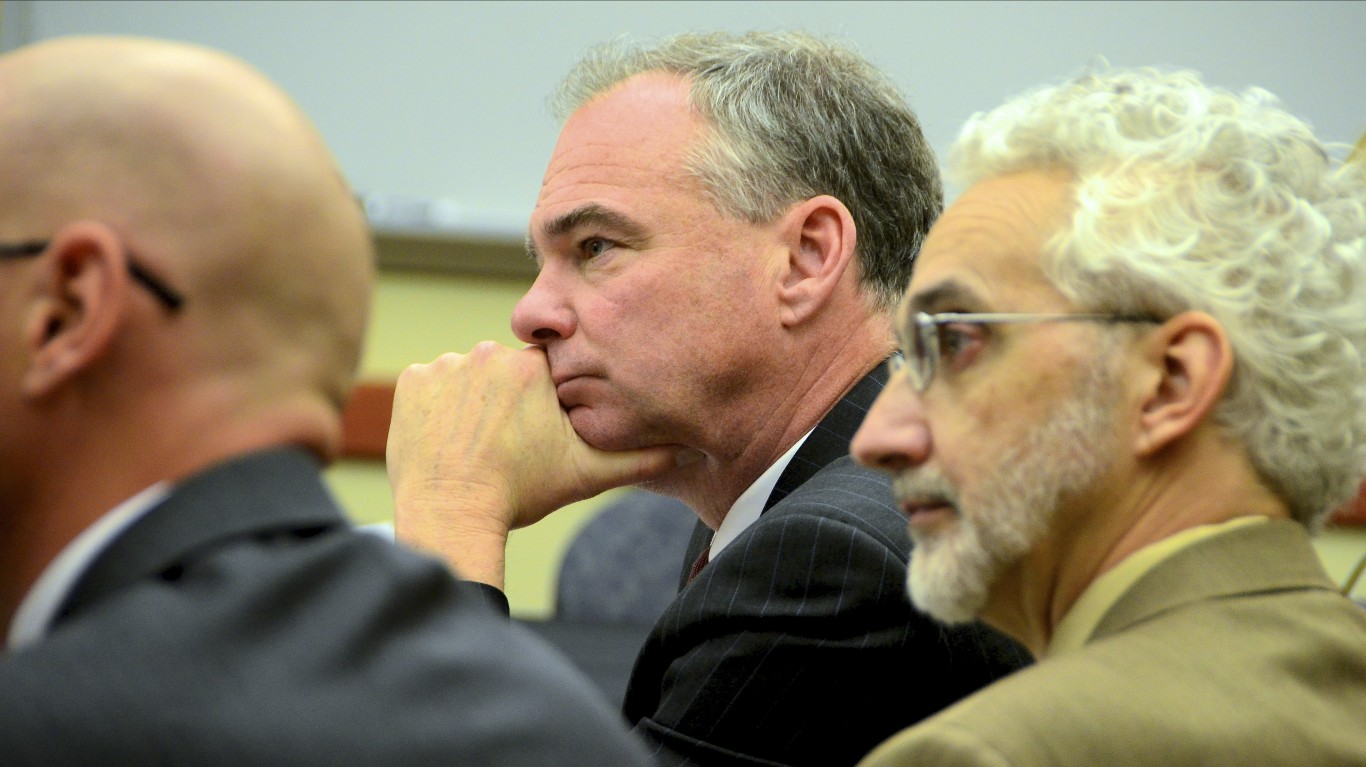 24/7 Wall St.
24/7 Wall St. 24/7 Wall St.
24/7 Wall St.